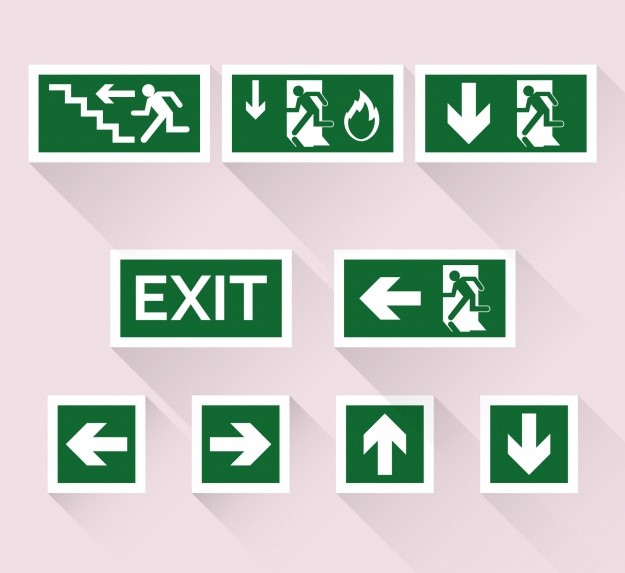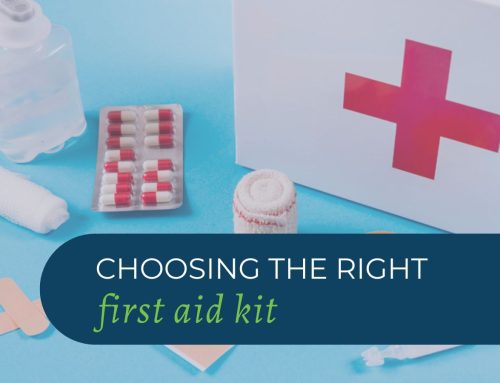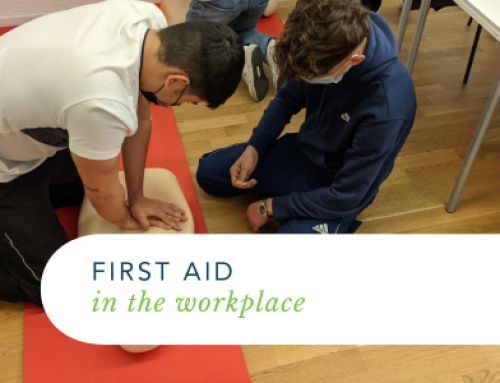The initial response to an emergency includes removing people from danger which often necessitates evacuating from that area of danger to another safer location. In preparing for an emergency, it is important to have already identified the best and quickest routes to the safe locations.
Our goal, in the event of an internal emergency requiring us to evacuate the occupants as quickly and safely as possible, is it to ensure our routes or paths of egress are indeed the most suitable way away from the danger?
Egress simply means a way of going out. In an evacuation, we will always be following some path of egress. The question is whether or not the path we are using or instructed to use, is optimal? Circumstances in an emergency can change and we should be routinely reviewing our plans to see if there is room for improvement.
Let’s start with how we determine the egress paths for leaving any building.
There should be a primary and at least one alternate egress path from all areas within a building. These will be shown and clearly marked on the Evacuation Diagrams throughout the building.
A solid green line will mark the primary egress path from the location at which you are viewing the diagram to the nearest designated exit from the building. There will often be a broken green line as well marking an alternate route from the same location which may be followed if the primary path, for some reason, cannot be followed.
Information about the evacuation and egress paths should be outlined in the Emergency Planning Procedures of your company and be found in your Emergency Management Plan. You may have illuminated emergency signage throughout the building.
This may include illuminated exit signs, ‘running man’ signs, and directional arrows. These signs are generally placed along the identified egress path and at the exit from the building. Part of preparing for an emergency response is to ensure these paths of egress are indeed clear and safe to use with no obstructions.
Knowing the paths of egress should not be solely the responsibility of the warden team but of all occupants of the building. Safety is everyone’s business, not just that of a few.
One good starting point to determine the suitability of egress paths is to simply walk the path. We need a continuous and unobstructed path to exit the building from any point to an external safe location. Walking the path will give us some valuable insights as to whether the path is suitable.
Are there any obstructions limiting our egress? Are bins or furniture or other things stored along walkways that will cause a problem? Are the paths level and safe or is there perhaps uneven ground, steps, railings, or other trip hazards? Is the path suitable for anyone with a disability or wheelchair?
An important check is to see if the path actually leads out of the building and ultimately to a safe location and not just to the outside of the building.
We don’t want people evacuating via a route that leads to a ‘dead end’ costing valuable time, confusion and ultimately could mean loss of life. This is why there are illuminated exit signs at exits that will safely lead away from the premises.
It is important to stress that a door or path merely leading to the outside of a building is not always the same as a path of egress in an emergency. We need to egress to an Assembly Area where we can be safe and also be accounted for.
These pre-determined egress paths are chosen because they will be effective in the majority of likely emergencies that might occur. There may, however, be circumstances where those paths can’t be used and an alternate path needs to be taken. For this reason, the ECO of the facility needs to consider this and come up with suitable alternate egress paths than can be selected and used in urgent circumstances.
You also need to consider other challenges such as people with disabilities, mobility issues, young children, injuries and medical concerns, negotiating down or up steps. Suitable egress paths need to cater to all these situations.
Can the gates and doors lead out open at all times? In some buildings gates and doors will be deactivated when an alarm goes off. If gates are locked, are keys easily available and do staff know how to access these at all times? Can gates and roller doors be disengaged manually if need be and are staff aware of how to do this? Is the height of the door handles such that they can be easily opened? The door handles on exit doors should be levers that can be activated with a simple downward motion and not knobs that need to be turned.
Left to their own devices, occupants will instinctively leave a room through the same door that they used to enter. This is where the warden team plays a crucial role in terms of directing occupants to the safest and closest exit away from the danger.
They are there not only to marshal people out of the building but to safety. Normally, everyone should evacuate through the nearest designated exit, but again this needs to be a safe exit, not just the closest one. Good and effective communication between the wardens can ensure this occurs.
As outlined in AS 3745-2010, the ECO or person responsible for a facility should conduct regular inspections of the building that includes:
- checking that hallways are clear of obstructions, refuse & debris
- checking that emergency doors are clear of obstruction, operating correctly, and are not wedged in an open or closed position
- checking that stairways are clear of materials, debris & refuse
- checking that the floor surfaces of the hallways, lobbies, and stairways are clear of spills and other slip hazards
A continuous and unobstructed path leading to a safe place away from danger and ultimately outside of the premises is the bottom line when an evacuation is required. Reviewing existing emergency egress paths and being open to ways of improving things could go a long way to saving many lives.
The team at WEM can help facilitate a review of your current Egress Paths and help to create new Evac Diagrams that will reflect any adjustments.
Message us or call us today!
GET IN TOUCH
Are you ready for peace of mind that your workforce is as safe and prepared as possible?
With a dedicated team of staff ready to help you meet compliance requirements and improve the overall safety of your workplace, all you need to do is get in touch.
Request your free audit today!



